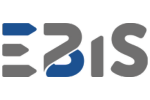Easy-to-use and functional Power BI
At its original conception, the Power BI system is a comprehensive tool for data analysis and reporting with great potential for extending functionality. Power BI enables the fast aggregation of data from multiple sources, the design of dashboards, and their transparent visualisation in interactive charts.
Interactive reports also available in the mobile version
Another vital advantage of the Power BI system is sending created reports to mobile devices, which is undoubtedly becoming increasingly important. Another key advantage of the Power BI tool is the interactive form of reports. This makes data analysis fast, simple, and intuitive, essential in a dynamic and rapidly changing business environment.
Power BI Desktop and Microsoft Power BI Mobile
Moreover, the reports generated by the Power BI desktop can be accessed via a browser and a dedicated app on mobile devices. This ensures that those who use Power BI have access to the data they need 24 hours a day, regardless of where they work.
Intuitive Power BI interface
Beginners will appreciate the uncomplicated operation of the Power BI business intelligence system – even one day is enough to learn how to create extensive reports. This fact is confirmed by participants in Power BI training events organised by EBIS.
The possibility of integrating Power BI with Microsoft Office, Salesforce, or Excel
Further important considerations in favour of Power BI is that the mentioned above data analysis system works with popular Office programmes. In addition, data can also be accessed from many other local and cloud-based data sources, such as Dynamics 365, Salesforce, Azure SQL DB or Excel, and SharePoint.
Their timeliness is ensured by automatic incremental refreshing. In addition, Power BI Desktop provides detailed insights with actionable insights in a wide range of scenarios. It also boasts frequent updates (on average monthly).
How much does Power BI cost?
From a cost-saving point of view, the fact that Power BI is free in its basic variants remains essential. Payment is only necessary if you choose the options:
– Power BI Pro per user (€8.40),
– Power BI Premium per user (€16.90) or per capacity (from €4,212.30).
Power BI or Tableau – discover the capabilities of the other system
The Tableau system replicates many of the qualities characteristic of Power BI. The tool in question allows the relatively simple creation of reports and their transfer between users. The time required to master all the necessary functions of the programme is also short, which means that the programme is friendly to people without in-depth IT knowledge. Users choose whether they opt for Tableau online or the Tableau desktop version.
The strength of the Tableau system is the intuitiveness of data analysis – the user does not have to agonise over cumbersome formatting. The drawbacks of Tableau, however, are the exorbitant price and inferior modelling of datasets, especially when they come from different sources. Tableau’s strength, however, is its ability to visualise massive datasets.
Microsoft Power Bi, Tableau – why are data analysis systems necessary?
Modern data analysis and visualisation systems, such as Power BI or Tableau online, significantly speed up and facilitate the analysis of large data sets. At the same time, they minimise the risk of mistakes or the omission or duplication of essential data.
With an intuitive drag-and-drop interface, you can uncover hidden information needed to make critical business decisions faster. Notably, Microsoft Power BI, for example, also allows you to target queries for essential data in natural language, making it much easier for those with little technical knowledge to work and analyse data. All this while using trusted data in a secure self-service environment.
In addition, the advanced data analytics available in Power Bi or Tableau enable business analysts to create advanced calculations for complex analyses. With the help of business intelligence tools, visualising data and creating reports becomes much more accessible. The possibilities of any such programme are almost limitless. How data and reports are visualised depends on the users’ needs and the industry’s specifics.
Power BI versus Tableau – advanced business analyses
The analyses themselves, the creation of charts and reports with the help of Power BI or Tableau online, are not the end of the advantages of these two systems for data visualisation and dashboard creation. The artificial intelligence that supports data analysis systems makes predictive modelling significantly easier.
Those in the business community can thus make faster, more accurate decisions using ‘what-if’ scenarios through model building, AI-based forecasting, and other data analytics techniques. Data analysts can integrate and visualise results to scale models across the organisation. Charts created in Power BI or Tableau are easy for users to read, making essential data easier to decipher, and thus spotting trends or weak links in the organisation becomes simpler.
Power BI or Tableau – which to choose?
Deciding which of the tools presented is the best system for data analysis is not easy. When choosing between Power BI or Tableau, we must first consider our company’s individual preferences, its needs, and the environment in which it operates.
We encourage you to contact us to dispel all your doubts. Our consultants will provide you with comprehensive information on the capabilities of the Power BI system and the benefits of using it.


